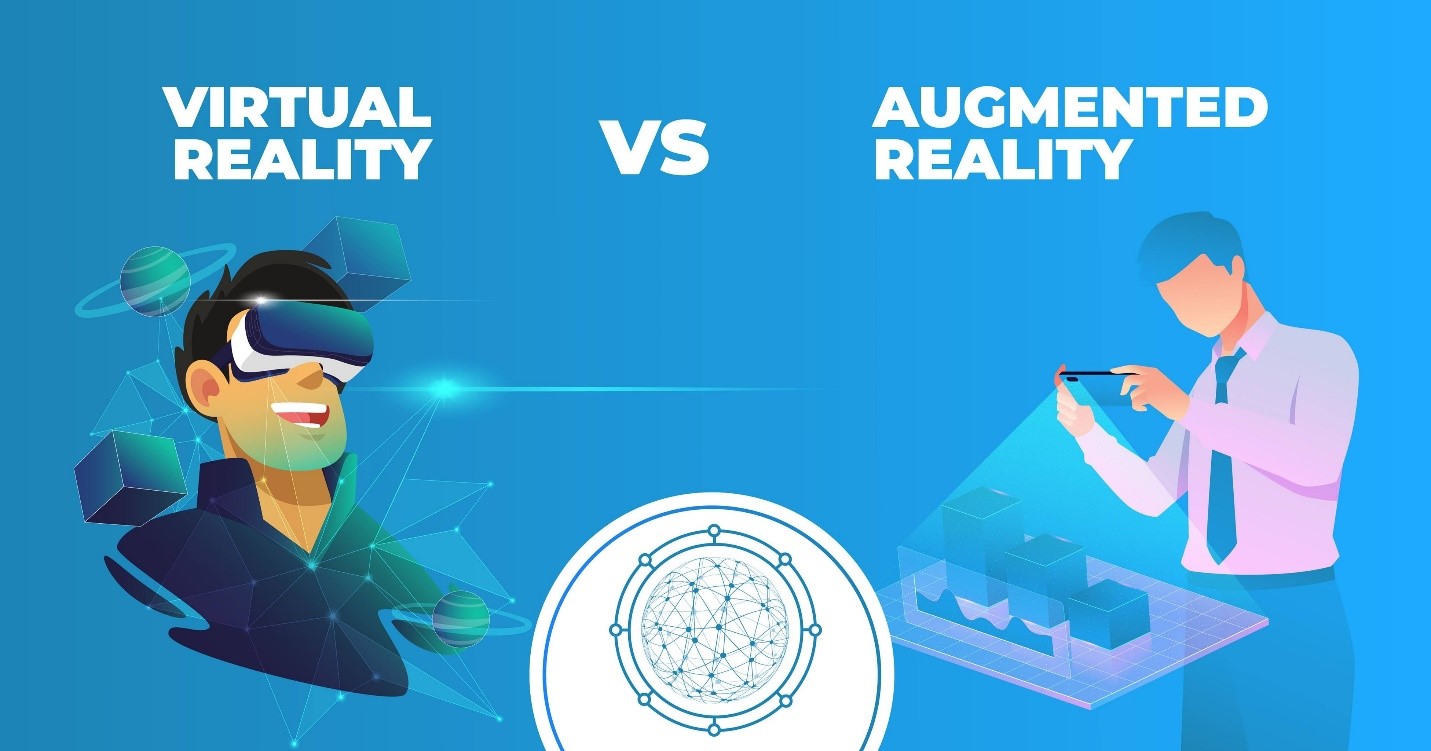In the rapidly evolving world of technology, Augmented Reality (AR) and Virtual Reality (VR) have become buzzwords that often get mentioned together. While they share similarities and sometimes overlap, AR and VR are fundamentally different technologies with distinct applications and impacts. Understanding the difference between them is key to appreciating how they’re shaping industries from gaming and education to healthcare and retail.
In this article, we’ll break down what AR and VR are, how they work, their unique features, and where each technology is being used today.
What Is Augmented Reality (AR)?
Augmented Reality is a technology that overlays digital content onto the real world. Instead of replacing your environment, AR enhances it by adding computer-generated images, sounds, or other sensory inputs that interact with your physical surroundings in real-time.
How Does AR Work?
AR devices use cameras and sensors to capture the user’s environment and then superimpose digital elements on top of it. This can be experienced through:
- Smartphones and tablets using apps that add layers of information onto the camera’s live view.
- AR glasses or headsets like Microsoft HoloLens or Magic Leap, which project digital objects into the wearer’s field of vision.
- Projection-based AR that casts images directly onto surfaces.
The key feature of AR is that you still see the real world, but enhanced with virtual objects or data.
Examples of AR in Use
- Pokemon Go: The popular mobile game uses AR to place virtual creatures in real-world locations that players can find and capture.
- IKEA Place: An app that lets users virtually place furniture in their homes to see how it fits and looks before buying.
- Medical Training: AR overlays anatomical information onto patients or mannequins to help doctors practice surgeries or diagnostics.
- Navigation: Apps that project directional arrows onto the street view to guide pedestrians.
What Is Virtual Reality (VR)?
Virtual Reality, in contrast, completely replaces the user’s environment with a fully digital world. When you put on a VR headset, you are immersed in a computer-generated environment that shuts out your physical surroundings entirely.
How Does VR Work?
VR devices typically consist of a headset with built-in screens and motion sensors. The screens display a stereoscopic 3D environment that adjusts in real-time as you move your head, creating a convincing sense of presence in a virtual space. Controllers or gloves may also be used to interact with the virtual world.
The goal of VR is full immersion—transporting you to an entirely different place or scenario.
Examples of VR in Use
- Gaming: Titles like Beat Saber and Half-Life: Alyx offer deeply immersive gaming experiences.
- Training Simulations: Pilots, soldiers, and surgeons use VR to practice complex tasks in safe, controlled virtual environments.
- Virtual Tours: VR can transport users to museums, historical sites, or real estate properties without leaving home.
- Therapy: VR is used to treat phobias, PTSD, and anxiety through controlled exposure to virtual scenarios.
Key Differences Between AR and VR
| Aspect | Augmented Reality (AR) | Virtual Reality (VR) |
|---|---|---|
| Environment | Real world enhanced with digital overlays | Fully immersive, computer-generated world |
| User Experience | See and interact with real surroundings + virtual content | Completely replaced surroundings; full immersion |
| Devices Used | Smartphones, tablets, AR glasses/headsets | VR headsets like Oculus Quest, HTC Vive |
| Purpose | Enhance reality with useful or entertaining info | Transport user to new environments or experiences |
| Mobility | Often mobile and portable | Typically stationary or limited mobility |
| Applications | Retail, education, navigation, industrial maintenance | Gaming, training, therapy, virtual meetings |
How AR and VR Complement Each Other
While AR and VR are different, they are often seen as complementary technologies within the spectrum of extended reality (XR). Some devices and applications blend elements of both, creating Mixed Reality (MR) experiences, where real and virtual objects interact in real-time.
For example, a surgeon might use AR glasses to see digital scans overlayed on a patient while also stepping into a VR simulation to practice the procedure beforehand. In retail, customers can use AR to try products virtually at home, and VR to experience an entire virtual store.
Challenges and Limitations
Augmented Reality
- Technical limitations: AR requires precise tracking and mapping of the real world, which can be complex and power-consuming.
- Device constraints: AR glasses are still expensive and bulky for widespread adoption.
- User distraction: Overlaying too much information can overwhelm or distract users.
Virtual Reality
- Motion sickness: Some users experience discomfort due to mismatch between virtual movement and physical senses.
- Hardware costs: Quality VR headsets remain relatively expensive and require powerful computers or consoles.
- Physical space: Users often need dedicated space to move safely while immersed.
The Future of AR and VR
Both AR and VR continue to evolve rapidly:
- 5G connectivity will enable faster, more seamless AR and VR experiences with less latency.
- Advances in hardware will produce lighter, more comfortable devices with better battery life.
- AI integration will create smarter, more interactive virtual environments.
- Enterprise adoption will grow as industries use AR/VR for remote collaboration, design, and training.
- Social VR platforms are emerging, offering new ways to connect and socialize virtually.
Experts predict that over the next decade, AR and VR will become even more intertwined with daily life, blending seamlessly with the physical world to create richer, more interactive experiences.
Conclusion
Augmented Reality and Virtual Reality are powerful technologies that, while often confused, offer distinct experiences:
- AR enriches your real world with digital information and interactive elements, keeping you connected to your environment.
- VR transports you to an entirely virtual world, providing deep immersion and new possibilities for exploration and learning.
Understanding these differences helps you appreciate their unique potential and how they can be applied in diverse fields from entertainment and education to healthcare and business.
As AR and VR technologies continue to mature and merge, the boundary between the physical and digital worlds will blur, opening up exciting opportunities to innovate, create, and connect.
Are you ready to explore these new realities?



